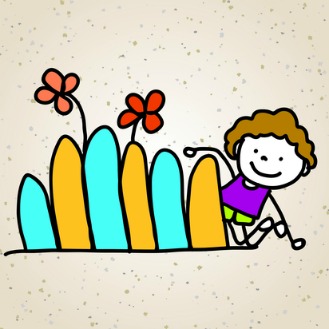What to do with this activity?
Hide and seek is a children's game that has been around a long time and it makes counting fun. You can play it indoors or outdoors, but set a few rules to keep it safe. For instance, there might be out-of-bounds spaces indoors, or set the boundaries for where they can go outdoors.
The rules are that one person (the "seeker" or "it") closes their eyes and counts while all the others hide. Take it in turns to be "it". At this age your child might only know how to count to 5 or 10 or 20. Maybe they count to 10 more than once to give others time to hide. When the counting is finished, the seeker tries to find whoever is hiding. It's exciting!
You might enjoy these photos of kids hiding - children at this age often think they can't be seen simply because they can't see you.
If you have a group of kids, try a different version of hide and seek called "sardines". In this game, only one person hides while all the others close their eyes and count. As each person finds the hider, they hide alongside them. Soon the hiding place is as packed as a tin of sardines. The last one to find the hiding place can be the first hider next time.
-
Why am I doing this?
Maths is more than working with numbers. It also consists of shape and space, patterns, measuring – things you do and come across in everyday life. When children begin to learn formal maths at school, they are building on a foundation of early numeracy learning from home. Even though they may not even be aware of it, parents and children engage in numeracy activity as part of their everyday lives.
-
How can I do more?
Always teach numbers in a natural way through everyday activities and play. Count steps on a stairs, food in your shopping trolley or cows in a field. Compare things when talking big or small, long or short, older or younger and faster or slower: “You carry the small box and I’ll take the big one.” Use the words – up and down, over and under, near or far, more or less when talking to your child. Talk about the shapes of everyday things. Ask your child what shapes they can see around the room they’re in.
Rate this activity
![]()
![]()
![]()
![]()
![]()
Based on 34 reviews
How would you rate it?
1 = Poor, 5 = Great.



